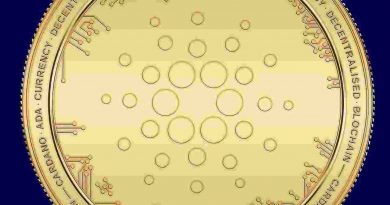What is Chainlink (LINK) and how does it Work?
“Chainlink is one the most innovative projects in the crypto space that can be used to link the external data and networks to the blockchains that otherwise works in silos limiting their potential. LINK token is the native token of Chainlink and is used as a collateral to prevent nodes from misbehaving.”
What is Chainlink
Chainlink is a decentralized oracle network that can connect smart contracts to the external data feeds from anywhere around the world creating an on-chain and off-chain connectivity that was previously impossible in the blockchains. Chainlink can be thought of as a middleware that is capable of delivering real world data to the smart contracts whenever needed using a decentralized network of nodes known as oracles.
Chainlink was launched on the Ethereum mainnet in May of 2019 with 1 billion LINK tokens minted at its inception. The LINK is the native token of the Chainlink Project and is used by the network as an incentive as well as collateral.
How Does Chainlink Works?
To understand the mechanism of Chainlink and how does it work, the process has been divided into steps that provides clarity:
- The Smart Contract that requires external real world data for its execution on the blockchain, requests the Chainlink’s protocol to provide the data.
- In response to the request, a Chainlink Service Level Agreement (SLA) is invoked that is in itself a smart contract.
- As soon as the request is obtained the ‘Chainlink Core’ converts the request into a format that is understood by the Off-Chain data provider.
- Chainlink SLA contract then creates three sub contracts that are named as Reputation contract, Order Matching Contract and Aggregation Contract. Each contract serves a specific purpose.
- The Reputation sub-contract checks the reputation of various oracle providers that can provide the data and selects the most reputed oracle among different ones. The selection is based on the track record and reputation of the oracle providers.
- The Order Matching contract then broadcasts the data request of the smart contracts throughout its decentralized network of nodes. The contract then takes the bids of the nodes and selects the right nodes that are capable of fulfilling the request and rejecting others.
- The Aggregation contract then collects all the data from the selected network nodes and compiles it into the results that are needed as per the request.
- These compiled results are then sent to the ‘Chainlink Core’ that then translates these results back into the format that the On-Chain network understands and then is sent to the Aggregation Contract.
- The Aggregation Contract collects the translated data from all the nodes and filters out the data from the nodes that are not matching the data of the majority of the nodes.
- The Aggregated result is then fed to the smart contract that made the request.
The Chainlink’s capability of linking the On-Chain and Off-Chain networks make it the most unique project and with multiple use cases in the crypto industry.
Disclaimer: The article is meant for the educational purpose only and in no way it should be considered as financial advice. Own research on the topic is advisable.
Photo by – xresch on Pixabay




